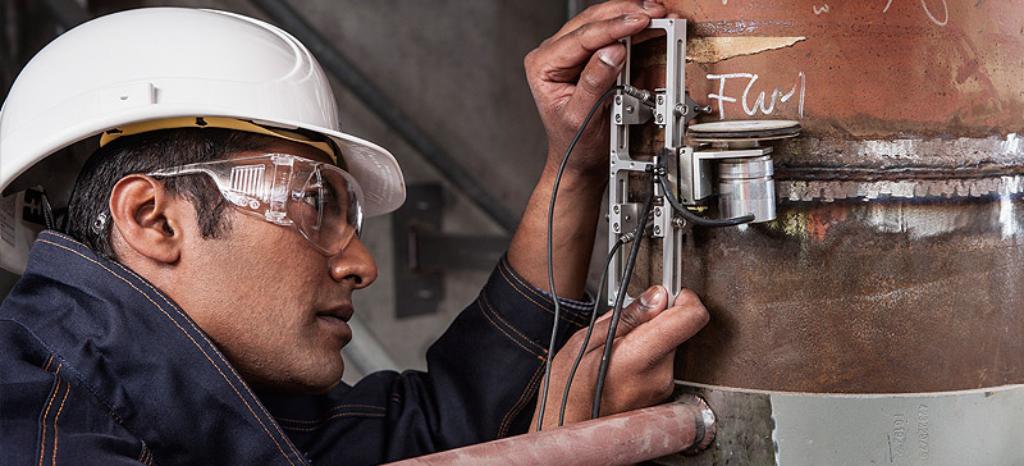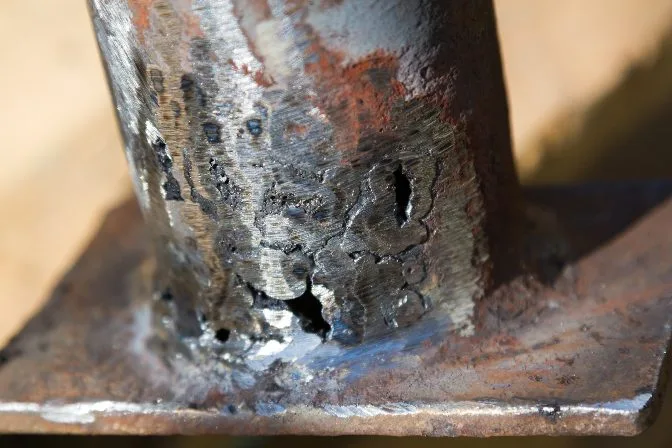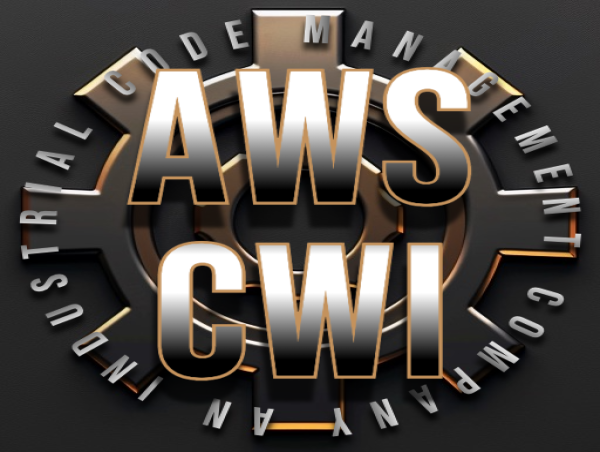
Discovering the Different Methods and Standards of Welding Examination for Getting Conformity and Integrity in Engineering Applications
The relevance of welding evaluation in engineering applications can not be overemphasized, as it works as a critical safeguard for making certain structural honesty and conformity with sector requirements. Various approaches, including aesthetic evaluation and advanced non-destructive screening techniques, give necessary insights into the quality of welds. In addition, adherence to recognized governing standards such as those from AWS and ASME establishes a structure for responsibility and quality. The landscape of welding inspection is constantly evolving, triggering a more detailed examination of emerging methods and their implications for design integrity. What might these developments involve for future jobs?
Relevance of Welding Inspection
Welding inspection plays a vital function in ensuring the integrity and safety and security of bonded frameworks. This procedure entails the systematic examination of welds to validate conformity with established requirements and requirements. The relevance of welding assessment can not be overstated, as it acts as a guard versus potential failings that might result from inadequate welding methods. With extensive inspection, defects such as splits, gaps, and poor blend can be determined early, thereby preventing catastrophic failures that might cause structural collapse or safety and security dangers.
In addition, welding examination is vital for maintaining quality control throughout the welding procedure. It makes sure that the welds meet the essential mechanical and physical buildings required for their designated applications. Routine examinations likewise cultivate a culture of accountability and constant improvement within welding operations, urging adherence to best methods and industry requirements.
In managed industries such as manufacturing, building and construction, and aerospace, rigorous welding evaluation procedures are mandated to follow legal and security demands. Ultimately, reliable welding evaluation not just shields human life and building but likewise enhances the longevity and reliability of welded structures, making it a crucial aspect of engineering and building.

Usual Welding Inspection Methods
A variety of inspection approaches are used to assess the quality and integrity of welds, each customized to identify details kinds of defects. Amongst one of the most typical methods is visual examination, which entails a detailed exam of the weld surface area to identify visible imperfections such as splits, undercuts, and inadequate blend. This approach is often the initial step in the evaluation procedure because of its simpleness and cost-effectiveness.
An additional widely made use of technique is radiographic inspection, where X-rays or gamma rays pass through the weld to disclose internal issues. This strategy is especially reliable for detecting porosity and incorporations within the weld material. In a similar way, ultrasonic testing employs high-frequency sound waves to identify interior flaws, supplying an in-depth analysis of the weld's honesty.
Moreover, magnetic bit examination is made use of for ferromagnetic products, permitting the detection of surface area and near-surface issues by applying magnetic areas and observing particle patterns. Lastly, dye penetrant screening involves using a fluid dye to the weld surface, revealing fractures and other stoppages upon inspection. Each of these techniques plays a crucial duty in making sure weld top quality and compliance with website here industry standards
Non-Destructive Testing Techniques
Non-destructive testing see this (NDT) techniques are necessary devices in the analysis of weld high quality, allowing inspectors to evaluate the integrity of welded joints without causing damages to the products. Numerous NDT approaches are used to recognize possible flaws, making certain that welds satisfy the required criteria for safety and efficiency.
Among one of the most prevalent methods is ultrasonic testing (UT), which utilizes high-frequency audio waves to spot inner imperfections such as splits or gaps. Radiographic testing (RT) uses X-rays or gamma rays to generate photos of welds, disclosing any type of suspensions within the product. Magnetic bit testing (MT) is effective for detecting surface and near-surface issues in ferromagnetic products with the application of magnetic areas and contrasting bits.
Fluid penetrant screening (PT) is an additional widely made use of approach that entails applying a color to the surface area of the weld, which leaks right into any fractures, making them noticeable under ultraviolet light. Each of these techniques offers distinct benefits and limitations, and the option of a suitable technique is critical to accomplishing exact analyses of weld stability. Eventually, the implementation of investigate this site NDT methods considerably adds to the reliability and safety of design applications.

Governing Criteria and Compliance
In the world of welding examination, adherence to regulative requirements and conformity is paramount to make sure the safety and dependability of welded frameworks (Welding Inspection Milwaukee). Various companies, consisting of the American Welding Culture (AWS), the American Culture of Mechanical Designers (ASME), and the International Company for Standardization (ISO), have actually developed guidelines that govern welding methods and assessment procedures. These requirements give a structure for top quality assurance, outlining the essential certifications for examiners and the methodologies for analyzing weld integrity
Compliance with these governing standards not just improves the architectural stability of bonded assemblies yet likewise minimizes dangers connected with failures, which can have devastating repercussions. Inspections need to be executed using specified procedures, consisting of aesthetic, ultrasonic, and radiographic approaches, to ensure that welds meet specified standards.
In addition, adherence to these criteria is commonly required by legislation, specifically in markets such as aerospace, construction, and production. Routine audits and accreditations are important to preserve conformity, thus promoting a society of security and quality within companies. Ultimately, governing requirements and compliance act as the backbone of reputable welding evaluation practices, ensuring that crafted frameworks satisfy both efficiency assumptions and security requirements.
Finest Practices for Welding Evaluation
While keeping conformity with regulative requirements is essential, implementing ideal methods for welding inspection even more improves the safety and security and stability of welded frameworks. Effective welding evaluation starts with thorough preparation, which consists of understanding the particular demands of each job and ensuring examiners are well-trained in relevant approaches and criteria.
Making use of a detailed examination checklist assists to make certain all essential aspects are examined, such as weld size, penetration, and aesthetic issues. Non-destructive screening (NDT) methods, such as radiographic or ultrasonic testing, must be used where appropriate, offering a more in-depth examination of weld quality without compromising the honesty of the materials.
Documentation plays a substantial function in finest techniques; maintaining precise documents of examinations, consisting of pictures, test outcomes, and conformity reports, ensures responsibility and facilitates future analyses. In addition, promoting a culture of open communication between welders and inspectors can result in very early recognition of possible issues, promoting prompt restorative actions.
Final Thought
In summary, the application of strenuous welding assessment approaches and adherence to established standards are essential for guaranteeing conformity and reliability in design applications - Welding Inspection Milwaukee. Methods such as visual examination, radiographic screening, and ultrasonic testing function as important devices in recognizing flaws and maintaining top quality assurance. By fostering a society of liability and quality, organizations can enhance the honesty and long life of welded frameworks, eventually adding to the security and efficacy of engineering tasks
Different methods, including aesthetic assessment and advanced non-destructive testing strategies, supply important understandings into the high quality of welds.Welding inspection plays a critical role in making certain the integrity and safety and security of welded structures.A range of examination techniques are used to evaluate the high quality and honesty of welds, each tailored to discover details types of flaws.An additional widely utilized approach is radiographic examination, where X-rays or gamma rays permeate the weld to expose interior issues.In the world of welding inspection, adherence to regulative criteria and conformity is critical to make certain the safety and reliability of welded structures.
Comments on “How Welding Inspection Milwaukee Makes Certain Safety and Top Quality in Your Projects”